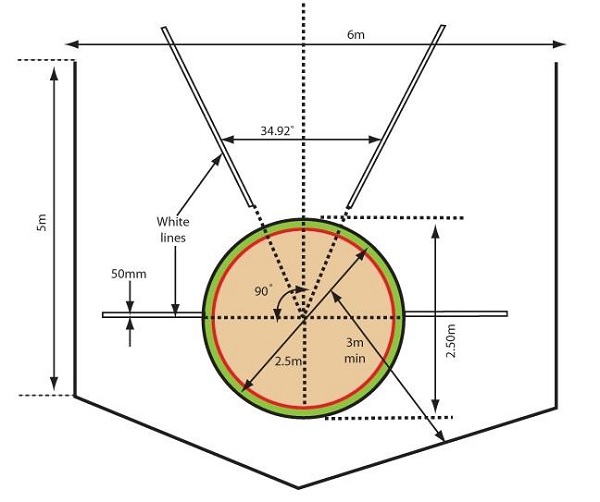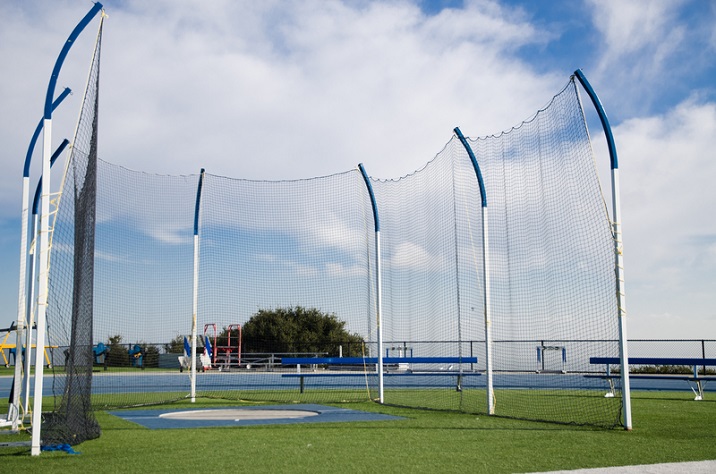Discus Throw – Playing Environment
While playing Discus Throw, the player launches the discus from a circular area by turning around oneself for one and a half turns. The playing environment of discus throw mainly includes the following −
- Throwing circle
- Cage
- Landing zone
Let us discuss each of them in detail.
Discus Throw – Field Design
The following diagram shows the typical structure of a discus throw playing environment −

Discus Throw – Throwing Circle
Also called Discus Circle, it is the area within which the player needs to take a start and complete the throw. It is made of iron, steel or other suitable material such as hard rubber sheet. The top of this circle is aligned horizontally with the ground outside the circle.
The measurements of throwing circle are as follows −
-
Inside diameter = 2.5m (±5mm)
-
The throwing circle rim = at least 6mm thick, and 70mm to 80mm deep.
The rim is always painted white for the purpose of demarcation. The interior of the throwing circle is made of concrete or some non-slippery material. The surface of the throwing circle is even and 1.4cm – 2.6cm lower than the rim of the circle.
Discus Throw – Cage
The U shaped cage offers protection for the viewers. It is designed and manufactured such that it can take the load of misthrow of the discus of 2Kg flying at the speed up to 25m per second. Any strong material that offers protection for the player from rebounding the discus can be used for the cage.

Generally, the netting of cage is constructed from synthetic fibers or steel wire of moderately high tensity.
The cage measurements are −
- Width of the mouth is 6m
- Height = 4m
Mouth of the cage is positioned 7m in front of the center of the throwing circle.
Discus Throw – Landing Zone
The landing zone (also called landing sector) is where the discus arrives after the player throws it. The landing zone’s surface must be capable of taking the impression of the discus upon its landing. It is made of natural grass or other suitable material without any bumps.
The landing zone is laid at an angle of 34.92° with respect to the middle of the throwing circle. It is marked by 50mm wide white lines. The landing zone is 80m long.
